You’ve probably heard about reading people. About picking up on subtle cues, such as eye movements and body language, that convey info about a person’s intentions. It’s also possible to read cars – to divine the intentions of the driver.
Here are some examples worth learning to look for:
Wheel angle –
People who ride motorcycles learn to judge driver intentions by the direction of the car’s wheels – especially when the car’s driver is signaling something else. Always trust the wheels rather than the signal. The driver may have left the signal on by accident, or accidentally signaled right when he meant left.
Bear in mind that many modern cars will not let you manually cancel an inadvertent signal. At least, not immediately. Most will “flash” at least several times in the direction inadvertently indicated and sometimes you have to actually turn the wheel in the opposite direction to cancel/reset.
Which the driver may not do until after he’s turned right in front of you.
Weight transfer forward –
You can’t see brake lights from head-on. But you can see the front end of a car squat as the weight of the car shifts forward and the suspension compresses as the result of hard braking.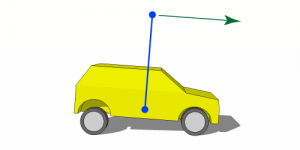
This can help you judge how much time you’ve got – or not got – to cross in front of an oncoming car.
You can and should rely on this visual evidence of deceleration to judge whether a car is going to stop for a red light – or not. This is another “tell” motorcycle riders depend on to save their lives.
Never assume that just because the light is red, that car is going to stop. And never enter an intersection on faith – just because you’ve got the green. You may be entirely in the right, legally speaking.
And will be just as dead, regardless, if you pay attention to that instead of the other thing.
Brake lights steady –
We’ve all cruised around busy parking lots, hoping to find an empty spot. Sometimes, we’ll see a guy in his car – and it looks like he might be getting ready to leave. But is he?
If the car’s brake lights aren’t on, it means he’s still in Park – and either just sitting and waiting or otherwise not getting ready to go. If the brake lights are on, then he’s probably in gear – and movement is probably imminent.
If, after 30 seconds or so, the brake lights haven’t come on, assuming he’s staying put and continue your prowling.
The Drifter –
A driver who is approaching his destination will often decelerate before he brakes – or signals. If the car ahead of you seems to be bleeding speed for no apparent reason, assume it’s because he’s going to brake and signal at any moment – and not necessarily in that order.
These drivers are often the type that will literally almost come to a complete stop – on the road – before they begin making their turn off the road.
It’s not a bad idea to cover your brake pedal and increase your following distance a bit when you find yourself behind one of these.
Unpredictable drivers are dangerous drivers and best given a wide berth.
Jockeying –
You can usually predict which cars are going to make a move – attempt a pass – in heavy traffic – according to the vivacity of the car. 
Most cars plod along torpidly, like ear-tagged cows on a feed lot. One follows another – mooooo! – and you can just tell their drivers are focused on the car ahead and not on getting ahead.
But there are some bulls among the cows. Their movements are quicker; you can watch them lining up for the shot – so to speak. These are the ones watching the traffic light, anticipating the green.
They will be ready to go when it does.
If you can, get behind that driver. He’s the one who won’t be the head of the conga. You might actually get where you’re going before the sun goes down.
Make eye contact –
This one will give you the most information about what a driver is about to do – or not do.
If you make that visual connection with the driver of the other car, you can presume he sees you and thus won’t pile-drive into you. If on the other hand, you can’t make eye contact – if the driver seems oblivious to your presence – assume he is; that he does not see you.
Even if you have the right-of-way, even if it’s the other driver’s legal obligation to yield – assume he won’t if you haven’t locked eyes.
This is especially important when you are on foot.
As at a crosswalk.
Look at the person behind the wheel of any cars that are in a position to run you over and assume they will – unless you know they won’t.
. . .
Got a question about cars – or anything else? Click on the “ask Eric” link and send ’em in!
If you like what you’ve found here, please consider supporting EPautos.
We depend on you to keep the wheels turning!
Our donate button is here.
If you prefer not to use PayPal, our mailing address is:
EPautos
721 Hummingbird Lane SE
Copper Hill, VA 24079
PS: EPautos magnets are free to those who send in $20 or more. My latest eBook is also available for your favorite price – free! Click here. If you find it useful, consider contributing a couple of bucks! 


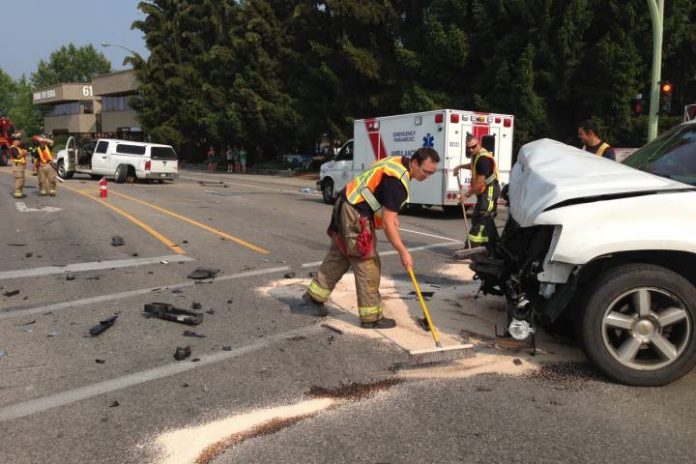

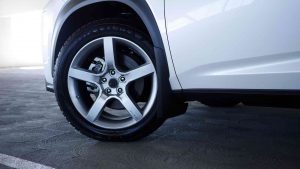
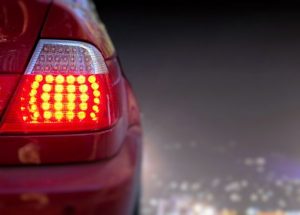








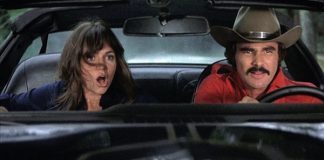
Sage advice there, however the brake lights steady is not as reliable as it used to be. I’ve seen these dipshidiots get in their car, start it up, put it in reverse, and sit there and play with their phone for 5 minutes or longer. One time I went in the store and came out 15 mins later and this lady was still in her parking spot…in reverse with the brakes on.
That eye contact thing is a valuable tip. Out in the boonies, where there are few roads with painted lines, you’ll encounter drivers who raise a hand from the steering wheel like they are greeting you. What they are doing isn’t just friendliness, it’s an acknowledgment that they see you and a query of “do you see me?”.
My dad used to call it throwing up your hand, rather than waving, as in “Throw up your hand when a car’s coming”. If an approaching driver doesn’t respond when you throw up your hand, assume that he’s oblivious to other traffic. A pedestrian on a country road is well advised to raise a hand in greeting if a car is approaching to see whether or not the driver sees him on the side of the road.
A driver who isn’t familiar with the unmarked paved roads out in the country is likely to straddle the center of the road or to come too close to a man waiting for traffic to pass before he walks across the road to check his mailbox. Those drivers bear watching.
Thanks for that, Ed! The mystery is finally solved!!! Could never understand why everyone was always “waving” at me when I moved here to the country. 17 years later…now I know!!!! (‘course, they probably think I’m oblivious, as I don’t see THEM…but I do see their vehicles….).
Start throwing up your hand in response so they don’t catch you at the beer joint and beat the fuck outta you. One of them will tell the others, “There’s that New Yorker who ain’t throwed up his hand in the 17 years he’s been here.” ahaha
Beer joint? [shudder]…..ewwwww….
The thought of that might make me throw something up, alright! 😉
Special rules for KY:
If a car is going slow and hugging the right edge of a two-lane road and not signaling…he is going to turn LEFT.
That car that pulls out in front of you, even though you’re the only other vehicle on the road…is not only NOT going to accelerate, but is going to hit his brakes and turn into the very next driveway, 9′ from the one he just pulled out of.
Within a few hundred feet of a BBQ joint or fast-food restaurant, ANYTHING is possible- and the laws of physics are suspended.
To properly interpret what the pig or highway working directing traffic wants you to do, one needs a gibberish-to-sanity dictionary.
The first person coming upon a dead possum or raccoon has the right to stop and pick it up, even if he is coming from the grocery store or fast food joint with a full load of victuals already. First come, first served. If he passes, the next vehicle has preference.
Your vehicle need not be equipped with a functioning horn as long as you are capable of belching at will, and can achieve consistent levels of 80 decibels or greater.
You forgot that within 100 feet of a beer joint you can expect approaching cars to swerve into a left turn in front of you heading into the parking lot. No common rules of the road apply when beer is in sight. Maybe that just applies in Virginia, though.
They haven’t learned that one yet, Ed- as up until just recently, these counties ’round here were dry. Now we’re gonna see some REAL crazy stuff!
If they have Texas plates just give ’em plenty of room!
Excellent reminders, Eric! Back in the day, they taught most of this stuff in driver’s ed. I made sure to pass it along to my kids.
A corollary to the weight transfer thing: if you see the car’s nose suddenly lift (say, when the light turns yellow), you know the driver has stomped the gas. Stay out of his way.
And if you notice that the driver is texting or applying makeup, treat that vehicle as driverless and act accordingly.
Thanks for the kind words, Jeff!
And – double amen on the texting/oblivious driver thing…
I saw a pretty close call yesterday on the way home. Little Kia coupe about 50 yards in front of me, in the left lane, just moving along at speed. All the sudden it heads into the median, rear end cuts loose and starts to come around front. Somehow the “driver” regained control, cut across to the right lane and limped into the next exit.
My guess is they got hypnotized/drowsy, but easily could have been on the phone too. If they would have been in a herd of cars (or a top heavy SUV) that wouldn’t have ended well.
Say Eric, how are these robot cars going to pick up on these human nuances?
They aren’t you say? Then how will these new fangled robot cars operate in human traffic?
Just ban human drivers or tax them out of oblivion? Sounds good…
Well done, sir.
I recognize these behaviours in myself as a driver and have seen them in other drivers.
Thanks for the kind words, Marlon!
The “Drifter” is a constant annoyance down south (Mississippi, Alabama, Louisiana). Most come to a complete stop to do their turns, even on highways. It’s like they were teaching new drivers this or something…..
Nicely done.
Printed this out for my teenage kids, who are just starting driving/riding.
Thanks, AF!
They will never be involved in an “accident” if you get them to memorize and follow these rules in addition to those from Eric, https://quizlet.com/131930037/ups-5-seeing-habits-and-10-point-commentary-flash-cards/